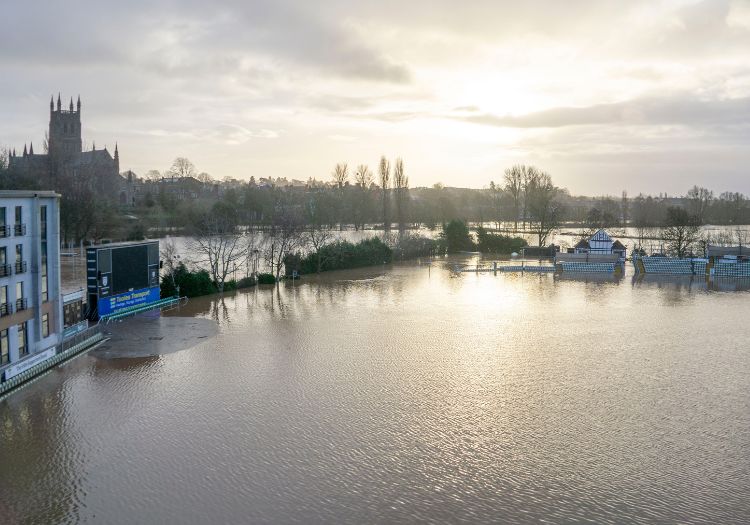As previously reported by The Cricketer, this eventuality had been likely since a fourth flood of the off-season last week brought the county's iconic ground back underwater

Worcestershire's first two County Championship home matches of the season will be played at Kidderminster as a result of relentless flooding at New Road over the winter.
As previously reported by The Cricketer, this eventuality had been likely since a fourth flood of the off-season last week brought the county's iconic ground back underwater, with groundstaff previously having been unable to get onto the square at any point between mid-October and late January.
A fifth flood this week, though, has forced the club's hand.
It was always the case that Worcestershire would either play neither or both of their home clashes with Durham (April 19) and Somerset (April 26) at Kidderminster, such is the cost and scale of readying the outground to host first-class cricket.
And it will be the first time since 2019 that Worcestershire have had to call on the venue to help out for a Championship game. Five years ago, it was once again because of flooding at New Road that Kidderminster was called into action. The ECB already factor New Road's perennial issues into their schedule, so the ground isn't asked to host in the opening couple of fixtures.
Had the ground been ready, the Durham and Somerset games would have taken place on hybrid pitches, newly permitted in the County Championship.
Central Sparks' clash with Sunrisers in the Heyhoe Flint Trophy has also been moved to Kidderminster on May 1.

New Road has spent much of the winter underwater (Image: Worcestershire CCC)
Worcestershire chief executive Ashley Giles admitted earlier this month that the increase in frequency of serious flooding might compel the county to look elsewhere for a new home.
"The problem isn't per se the water – it's what's in the water," head groundsperson Stephen Manfield told The Cricketer last week.
"There is sewage in there; the fact that it keeps breaking the river means that we keep getting the river wash-off, all the silt, anything that's in there.
"The floods are getting worse and getting dirtier. If this was just a huge volume of water, I wouldn't be as bothered as I am. But silt has an adverse effect: it doesn't bind or dry out very well, so if there is too much silt on the surface before we start playing cricket, it's likely to take slow, low bounce, it's likely to break up, it's likely to be very dusty. It's not really good for cricket. If this was a rugby field, you'd be fine. But we get everything: next-door's grass cuttings, sticks – whatever you throw in the river is essentially on the field.
"The square is now made up of anywhere between 48 and 50 per cent silt. A normal cricket square is around 30 per cent between sand, silt and clay. We're already in dangerous levels of that, and if you can't improve or get onto the square and let it just keep on taking hits, eventually it has a huge knock-on."
Join The Cricketer's brand new Whatsapp channel for the latest breaking news, comment and features - click here to become a member